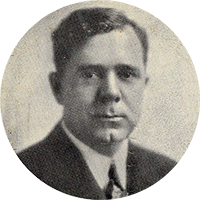Prior to 1928, travel in Louisiana was difficult and expensive, as drivers relied on a patchwork system of ferries, toll bridges, and makeshift water crossings. The average farmer who crossed a waterway twice a week paid 75 cents for each ferry trip, a total of $150 per year ($2,850 in 2025 dollars). Ferry crossings were situated where the geography allowed, often forcing motorists miles out of their way.
The Long administration initiated construction of more than 100 bridges, including the massive Huey P. Long bridge across the Mississippi River in New Orleans and many other modern steel structures that are still used today. Workers braved snakes, alligators, and other dangers to build these bridges and concrete causeways across swamps and marshlands. Financed by selling state bonds, these structures proved to be a good investment and vital for expanding Louisiana's economy.
Long’s network of roads and bridges dramatically reduced travel time and effort. Trips that once took a day were reduced to a few hours.

The Chef Menteur Bridge, a typical modern steel bridge built by the Huey Long administration ~ Courtesy of the State Library of Louisiana.





